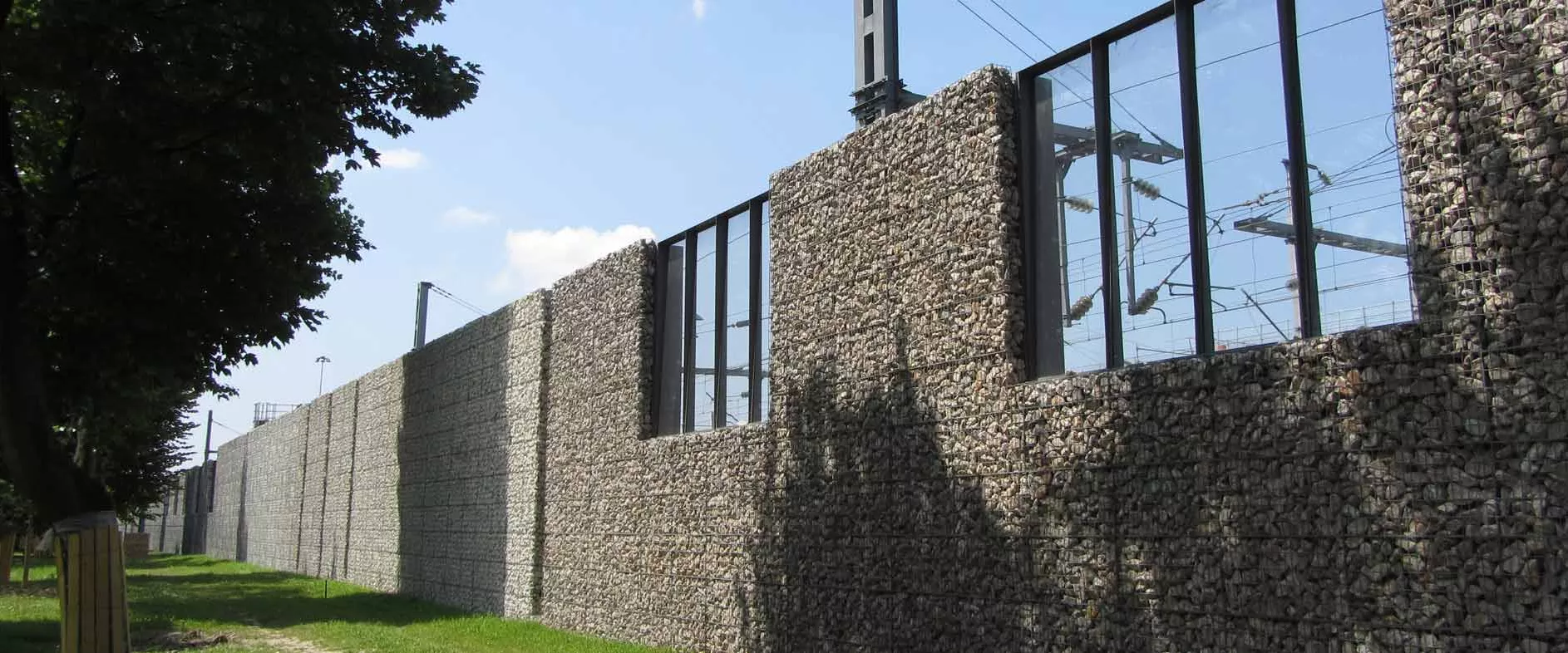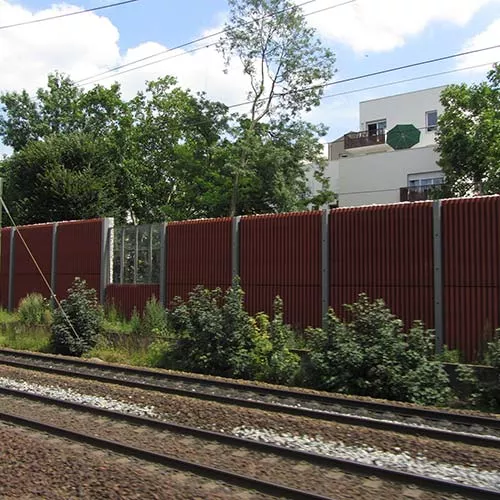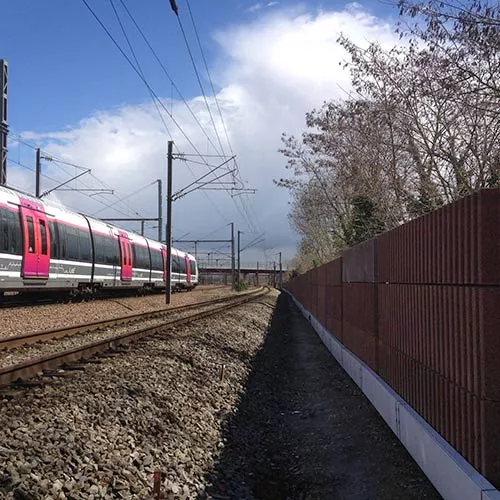
Our commitments to reducing rail noise
Modernisation of tracks, acoustic screens, insulation and forward planning, etc.: our “Mr Acoustics and Vibrations” explains how the SNCF Réseau teams reduce rail noise, which affects local residents near our lines, to achieve our objective of doubling the train’s modal share.
Noise: a considerable social cost
The social cost of noise in France is estimated by ADEME1 at €147.1 billion. Two thirds of this impact is from the transport sector, and 7.6% of the total cost is attributable to rail. Track renovation, acoustic screens, insulation works, rolling stock development and forward planning: our SNCF Réseau teams have been working for over ten years to deal with noise in some 60,000 buildings identified in 2010, using a simplified worst-case methodology, such as potential “rail noise black spots2”, minimising the impact of our trains on local residents’ lives.
Doubling the modal share of rail
This noise treatment is a prerequisite for the success and acceptability of our Group’s objective: to double the modal share of passenger and freight transport by 2030.
We outline the introduced measures with Jean-Philippe Regairaz, head of the Acoustics and Vibrations division within the Industrial and Engineering Directorate-General (DGII) at SNCF Réseau.

€147 billion
the annual social cost from noise, in France

€120m
for the elimination of “rail noise blackspots” between 2020 and 2025

10 dB(A)
corresponds to half the sensation of noise for the ear
What does “rail noise” mean?
Jean-Philippe Regairaz: It is the noise generated by all rail activities, which is produced mainly by rail traffic. Rail traffic noise is primarily related to contact between the wheels and the rails at conventional traffic speeds, i.e. between 50 and 300 km/h. At very low speeds, between 0 and 50 km/h, engine and equipment noise predominate. Finally, at very high speeds, over 300 km/h, aerodynamic noise becomes audible and is added to the rolling noise.
Limiting rolling noise is therefore a priority
J.P. R.: Smoother wheels and rails reduce train noise. And the wheel braking method is of key importance here. Historically, on most passenger rolling stock, the replacement of cast iron brake shoes with composite materials has significantly improved rail-wheel contact, thus reducing rail noise by 7 to 8 decibels over the entire train route, and not in braking zones alone. This is far from a trivial improvement: the sensation of halving the noise on the ear equates to a drop of 10 decibels. This has, in part, contributed to the removal of many “rail noise blackspots.” A similar improvement is underway on freight equipment.

What does a “rail noise blackspot” mean?
J.P. R.: It has been just over twenty years since regulations defined a noise blackspot. It is a sensitive building – i.e. a dwelling, a care, health, social service building or an educational establishment – exposed to “average” noise levels of over 73dB between 6am and 10pm, and/or over 68dB between 10pm and 6am. The building must also pre-date October 1978 – the first date on which regulations stated that buildings built near noisy infrastructure must protect themselves from it – or the date of the first sound classification order for the track next to which it is located. Tracks are classified from 50 train movements per day.
Where are the majority of these blackspots?
J.P. R.: The main blackspots are along the most frequented lines, and/or lines with high freight traffic. Those already covered are located mainly in the Île-de-France region, where 80% of rail traffic is found, and the Auvergne-Rhône-Alpes region, where traffic movements are also particularly dense, particularly on freight routes. Blackspots have also been addressed in the Bourgogne-Franche-Comté region. We now operate a more comprehensive strategy: studies have been launched in all other French regions to identify and address these blackspots as part of a multi-year investment programme with a €120 million fund from the Recovery Plan.
How is this “noise” criterion approached?
J.P. R.: Although the choice of trains running on our tracks is the responsibility of the Mobility Organising Authorities, SNCF Réseau is required to maintain low noise levels at the facades of local residents throughout the life of its infrastructures. This is why the noise criterion is considered at every project stage. As soon as the track route is traced, we try,where possible, to stay as far as possible away from dwellings while considering other rail-related constraints such as slopes, curves, etc. We also place train lines underground or in cuttings wherever possible.
Is track design also paramount?
J.P. R.: The nature of the rails is, in this respect, very important in our development work and for the 1,000 km of track modernisation that we carry out each year. For example, long welded rails have replaced the vast majority of traditional short rails, with joints every 18 metres that produced the famous “ker-tack, ker-tack” sound we’ve all heard (improvement: -3 dB(A), ed.). The transition from wooden to concrete sleepers has also resulted in track noise improvements (another -3 dB(A), ed.). Finally, when necessary, protections (acoustic screens or earth banks) are installed as close as possible to the tracks, provided that land is available to do so.
When do you choose to use such screens?
J.P. R.: The regulation calls for priority to be given to protection at source, within “economically acceptable” limits. A calculation is then made: the cost of construction against the number of dwellings protected. To protect an isolated house at source, a screen about 150-200 m long would have to be built; its cost would be higher than the cost of the protected house. Screens are used in urban areas in a denser setting, where their siting becomes economically acceptable. Using such protection, we can achieve reductions of around 10dB, which is perceived as half the noise.
How are they made?
J.P. R.: Mainly wood-concrete or low-carbon concrete for new generations of screens. We can also use metal panels into which mineral wool is incorporated, with translucent parts where appropriate. The choice is made to ensure the durability of these screens, which are considered as works of art. The goal is that these screens can last for 30-50 years without requiring maintenance.
Do you also work directly on buildings infrastructure?
J.P. R.: Absolutely, by acoustically insulating facades. This can be done in addition to acoustic screens, which cannot, for example, protect the upper floors of buildings. But we also choose direct work on the building where screens are not economically viable, or where there is an issue of integration into the environment. The joinery of the building is then replaced with high-performance acoustic and thermal double-glazed windows. Air inlets and roller shutter boxes may also need to be worked on. This work concerns both the creation of new routes and the significant modification of existing routes or the elimination of noise blackspots.

Are you seeing significant decreases in noise?
J.P. R.: According to measurement stations along the tracks, noise levels in many sectors are decreasing, despite the steady increase in rail traffic. But the ear has no auditory memory. Also, it is unable to recall previous sound levels, and “forgets” the progress made. Sadly, where actual gains are measured, residents do not always perceive them. For example, the current sharp drop in freight equipment noise emissions, by applying the latest technical interoperability specifications, goes unnoticed because, while the difference between a “noisy” and a “silent” wagon is clear (-8 dB(A), i.e. almost half the noise, ed.), wagons are replaced one by one. “Average” traffic noise therefore decreases very gradually; residents overlook such noise level reductions, even though noise measurements provide objective proof.
So how can we convey a feeling of “less noisy”?
J.P. R.: We can measure decibels. But this is an objective physical measure, not a measure of “discomfort”, which is by nature subjective. We are currently conducting exploratory work with our partners to identify what causes most disturbance. Is it the number of passing trains, the size of each of the noise peaks, the specific frequencies, or the sudden appearance of the noise? We still lack epidemiological data in this area, and we are investigating the acoustic factors involved in the instantaneous discomfort expressed by local residents with respect to the noise generated by rail traffic. SNCF Réseau has joined forces with Bruitparif and Gustave Eiffel University on the ANSES “GENIFER” project to improve the understanding of acoustic factors in instantaneous disturbance from rail noise.